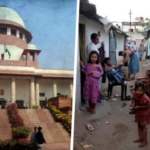
There was an excellent oped in one of the national daily [1] . It is good to see such sensible data rich ‘oped’ in the times of fake and vested news and opinions.
As we know that despite successive governments announcing grandeur programs and schemes for the poor farmer and agriculture sector of the country the grund reality is known to us. To take the subject with due earnestness, a basic question that has been raised by the author in the post is about the exact number of FARMERS in the country. Further it is important to know the farmers income and trend over the last 70 years if not more. A report by member Niti Aayog Ramesh Chand can be taken as a reference for the same. We don’t wish to go into the details but those interested can read it here [2] .
We are of the opinion that these constitute the two basic questions for which we need clear and unambiguous data based upon which one can consider formulating policies and bringing new schemes. However it is unfortunate that to this day there is no reliable data that can provide the clear picture.
The Agriculture Ministry’s last Input Survey for 2016-17 [3] released in February 2021, pegged the total operational holdings at 146.19 million. The report is full of interestings statistical data and is a reservoir on India’s farmers and agriculture and is a must for anyone interested in this issue. The NABARD All India Rural Financial Inclusion Survey of the same year estimated the country’s “agricultural households” at 100.7 million. The Pradhan Mantri Kisan Samman Nidhi (PM-Kisan) has around 111.5 million enrolled beneficiaries, with an average of 102 million-plus getting payments during 2020-21.
India’s official farmer population, in other words, is anywhere between 100 million and 150 million. But how much of this comprises actual farmers? Agricultural households, as per NABARD’s definition, cover any household whose value of produce from farming activities is more than Rs 5,000 during a year. That obviously is too little to qualify as living income.[1].
A “real” farmer is someone who would derive a significant part of his/her income from agriculture. This, one can reasonably assume, requires growing at least two crops in a year. The 2016-17 Input Survey report shows that out of the total 157.21 million hectares (mh) of farmland with 146.19 million holdings, only 140 mh was cultivated. And even out of this net sown area, a mere 50.48 mh was cropped two times or more, which includes 40.76 mh of irrigated and 9.72 mh of un-irrigated land. Taking the average holding size of 1.08 hectares for 2016-17, the number of “serious full-time farmers” cultivating a minimum of two crops a year — typically one in the post-monsoon kharif and the other in the winter-spring rabi seasons — would be hardly 47 million. Or, say, 50 million.
So in other words the farmers crisis is actually about this 50 million or so ‘Real’ farmers ‘ and their livelihood. It is therefore important to find how much they earn after getting the agro- prices as decided by the government and other factors. The earnings that have to be calculated also need to factor INFLATION, i.e. rise in cost of production for farming, and the real inflation of good grains and essential items so as to understand the real impact on these 50 million farmers.
Pre-Green Revolution, wheat and paddy yields in Punjab averaged 1.2 and 1.5 tonnes per hectare, while trebling to over 3.7 and 4.8 tonnes, respectively, by 1990-91. The output gains reaped by farmers from planting high-yielding varieties more than offset the lower price increases in their produce relative to that of other goods and services.
Since the 1990s, yields have further gone up to 5.1-5.2 tonnes/hectare in wheat and 6.4-6.5 tonnes for paddy.
IN certain crops like cotton, maize, vegetables, milk and poultry products, the yield and prices were much better due to increasing exports and also higher productivity. To arrive at a realistic MSP is a tough task that will also keep changing year after year.
Conclusion:
In order to arrive at a reasonable Price for the REAL Farmers of the country, the government has to make sure to get real data and target these 50 million farmers. Various organizations working in this area have to employ surveys dividing the country into various agro zones. The country is still not equipped with credible data which can be utilised for framing of policies that can help the farmers.
One other issue that has always been neglected by governments is in what way the farmers have to be compensated. For years the government has kept the prices lower and by subsidising fertilisers and other things. BUt this strategy has not worked well. The farmers need a better price and are willing to pay a higher price for his goods. But this price has to be reasonable and justified.
The Blockchain and Artificial Intelligence technologies are changing many sectors and can be used in the agriculture sector too on a large basis.
The Indian farmer is still marginalised and is way down the ladder in terms of facilities and basic amenities. One of the reason for this is the absence of ground workers and a direct interaction with farmers. We are aware of one such organization , National Council for Climate Change Sustainable Development and Public Leadership (NCCSD) based in Ahmedabad which conducts regular interactions with farmers and we have been part of such exercises. We think such organizations must be more empowered to conduct real surveys and collect credible data so that latest technological techniques can be applied to them to arrive at a clear picture of the farmer and agriculture sector in the country. Since agro is a very cyclical and uncertain sector one needs to have the latest data and not old.
We think that the government has to utilise this temporary time gap of farmers protest and try to work upon all such issues mentioned in this article. Else no matter how genuine or good intended the government work and form policies the real beneficiaries will always get ignored while the fruits are eaten by others.
References:-
1. https://indianexpress.com/article/opinion/columns/nabard-farmers-india-protest-agriculture-sector-7279331/
2.https://niti.gov.in/writereaddata/files/document_publication/DOUBLING%20FARMERS%20INCOME.pdf.
- http://agcensus.nic.in/document/is2016/air_is_16-17_210121-final_220221.pdf
Asheesh Shah
Samanvaya.


